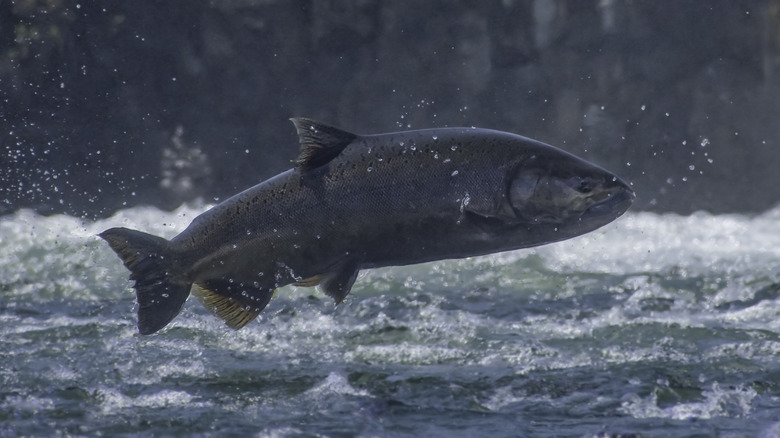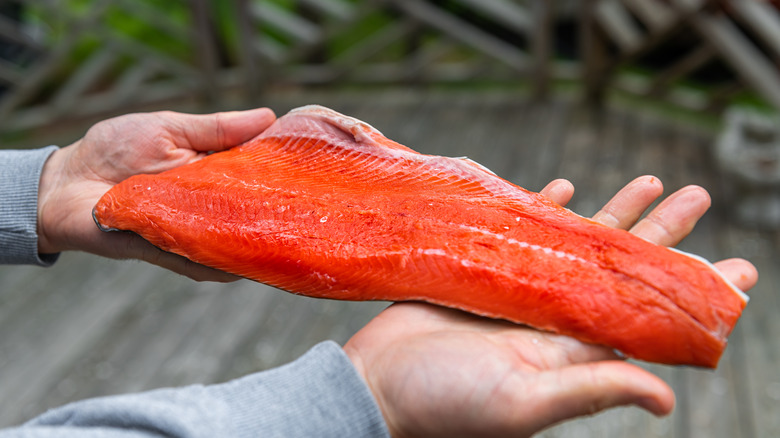How To Determine If Salmon Was Wild-Caught By Looking At Its Tail
If a fillet of salmon is wild, it will most certainly be listed on the label. People want wild and everywhere from restaurant menus to fishmongers want you to know it (and will add a price point to reflect it). However, you can't always trust a label, unfortunately. Fish fraud is real, and other times, things just get misplaced or mislabeled when on display.
The good news is there are some things you can look out for. If you're lucky enough to have the entire whole fish intact in front of you, taking a peek at its tail will offer a pretty foolproof clue as to whether or not it was caught out at sea or grew up on a farm. A wild salmon will have a larger, fan-shaped tail than its farmed friend. What causes this — and how else can you tell the difference between the two if no tail is to be found?
Why do the tails differ and what else can you look out for?
That large fan-shaped fin is fit for navigating open waters. It's wide and flat and perfect for swimming — think of flippers while snorkeling. Farmed fish often have somewhat smaller and tattered tails from spending their time in overcrowded tanks with other salmon, oftentimes taking a bite out of each other's appendage. (Boredom or brawling?)
If you don't have the whole fish in front of you and are just perusing a case of fillets, there are other ways to spot the wild ones. One is the color of the flesh. For the most part, wild salmon has a deeper, rich orangish-red hue. Farmed will be paler and more pink in color. The deeper hue of wild salmon comes from the orange-colored krill they eat. Some wild varieties are lighter in color, but the pink hue of farmed opposed to more of a shade of coral can serve as an indicator.
Another giveaway is the marbling. Farmed salmon will have thicker white fat marbling as they are not swimming upstream and getting exercise. They are in those overcrowded pens not moving much, and possibly getting into fights.

